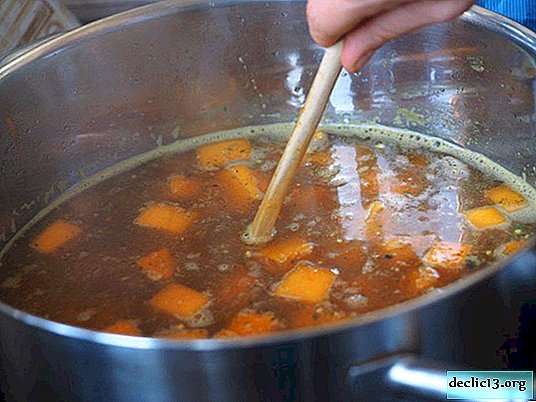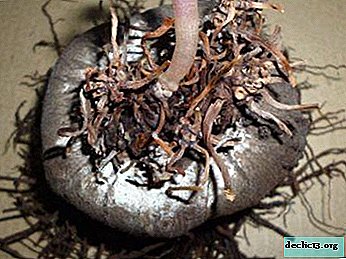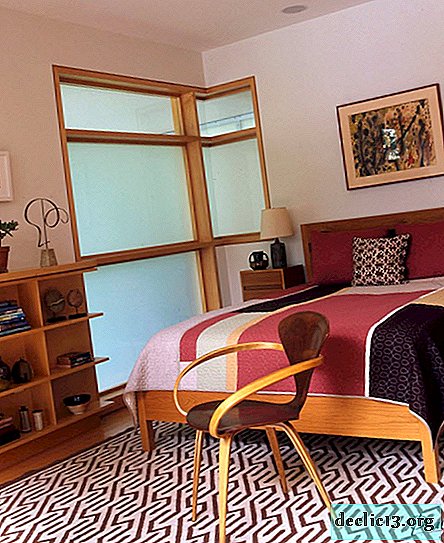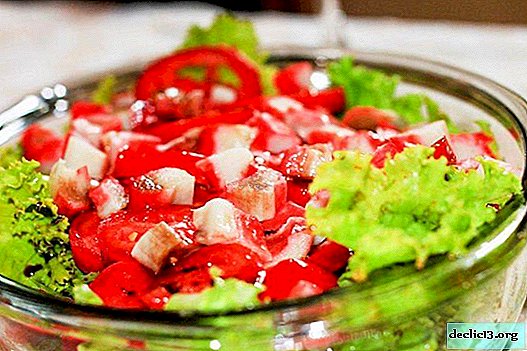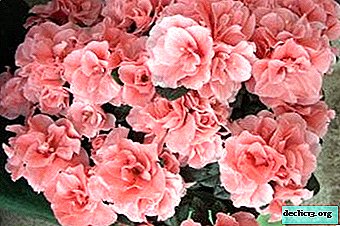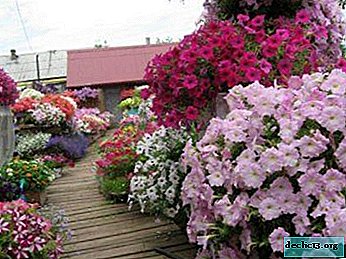The unique properties of aloe juice and their use in folk and official medicine
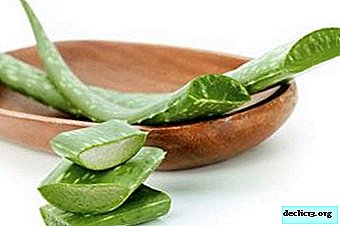 Aloe is an evergreen plant of the lily family, reaching a height of four meters in nature. The number of its varieties exceeds three hundred; small-sized species of aloe are often bred at home.
Aloe is an evergreen plant of the lily family, reaching a height of four meters in nature. The number of its varieties exceeds three hundred; small-sized species of aloe are often bred at home.
The beneficial properties of aloe make it very popular for use in both folk and traditional medicine. The juice of this plant is effective in the treatment of a variety of inflammatory processes, eye diseases and gastrointestinal tract. It is also often used in cosmetology, both official and domestic. Consider how juice is useful when taken orally and externally, what are the effective recipes of traditional medicine.
Useful and healing qualities
Aloe stimulates the metabolic processes in the body, protects the digestive tract, removes toxins and toxins, and helps to cleanse the lymph. Plant Juice:
- stimulates appetite;
- inhibits the development of Helicobacter pylori and tubercle bacillus;
- lowers blood sugar;
- stimulates blood circulation;
- struggling with anemia;
- protects against allergies;
- enhances tissue regeneration and collagen formation;
- promotes skin rejuvenation and increased microcirculation.
We recommend watching a video about the healing properties of aloe:
Vitamins and minerals, chemical composition
The healing properties of aloe juice are explained by its rich composition of beneficial components:
- minerals: iron, calcium, potassium, zinc, phosphorus, manganese;
- vitamins A, B, E, C, necessary for normal blood formation, strengthening immunity, tissue elasticity;
- amino acids, including essential amino acids, ingested only with food;
- volatile - natural antibiotics that fight pathogenic microflora: fungi, microbes, bacteria;
- tannins that provide antibacterial and anti-inflammatory effects, as well as normal blood coagulation;
- organic acids (succinic, malic, citric);
- flavonoids, catechins, poly and monosaccharides.
Photo
In the photo below you can see how the aloe plant (lat. Aloe) looks, from the leaves of which medicinal juice is obtained:



What helps?
The scope of aloe juice is very wide. What can be treated with this unique natural substance?
- Aloe has a powerful bactericidal effect against diphtheria, typhoid fever and dysentery, staphylococci and streptococci.
- The plant has proven itself in the treatment of inflammatory skin diseases, wounds, burns, as the extract successfully restores the epithelium.
- Aloe juice is used in the treatment of stomatitis and gingivitis in the form of rinses, it relieves gum inflammation, soothes toothache.
- Why drink plant juice? Aloe is used for metabolic problems, digestive disorders, kidney diseases, and the treatment of colitis, gastritis, constipation, pancreatitis, including in chronic form.
- In neurological diseases and sleep disorders, juice is recommended as an adjuvant. Aloe extract is part of many sedatives.
- Aloe helps in the treatment of conjunctivitis, glaucoma, cataracts, myopia, opacification of the vitreous body and many other ophthalmic diseases.
- Plant preparations are used for injuries and burns of the eyes to restore damaged tissues of the organs of vision.
- Aloe juice is included in many cosmetics, as well as drugs for the treatment of dermatitis, eczema, psoriasis, boils.
Read more about what diseases it helps from and how to take aloe juice properly, read here.
Where to get this substance?
This drug is not a scarce product, and if a need arose, it can be obtained in two ways:
- Make aloe juice yourself. From the three-year-old plant, several lower leaves are cut, where the most juice is, the cut is sprinkled with charcoal, the fresh leaves are well washed with warm water, cut into pieces, folded in cheesecloth and squeezed. Ready juice is mixed with alcohol in a ratio of 4: 1 and stored in a bottle of opaque glass in a dark place.
- Buy in pharmacy chains. On the shelves of modern pharmacies there are many offers of medicines called "aloe concentrate." But if you look closely at the list of product ingredients, it turns out that preservatives occupy a considerable part of it.
You can find out how to save aloe vera juice for future use at home here.
Home use
 Pure aloe juice without additives is not allowed to be used inside.. The concentrate can cause an overreaction of the body, from allergies to anaphylactic shock, depending on individual sensitivity.
Pure aloe juice without additives is not allowed to be used inside.. The concentrate can cause an overreaction of the body, from allergies to anaphylactic shock, depending on individual sensitivity.
Therefore, the extract for ingestion is always prepared with additives: on water, with honey, rose hips, red wine or vodka. For the treatment of certain diseases, even 2-3 drops per 30 ml of water is enough to achieve the desired effect.
Outwardly, the use of pure juice is possible - for example, for cosmetic purposes.
Traditional medicine recipes
- From cough. Aloe juice is mixed with honey in a ratio of 1: 2 and taken a tablespoon three times a day. Two tablespoons of aloe juice are added to a glass of cahors, you can sweeten with honey to taste, mix well and take half a glass twice a day. The recipe is suitable only for adults.
- For the skin. The skin is carefully cleaned, then slightly warmed aloe juice is applied, gently patting the skin until absorbed. It can be applied not only to the skin of the face, but also to the neck, décolleté, and hands.
Aloe juice can be added to tonic, lotion, cream and use the product as usual. You can dilute the juice with water, pour into molds and freeze, and then wipe the skin with ice cubes. With rosacea, it is better to refuse this method.
- From cancer. Half a glass of aloe juice, meadowsweet, calendula, yarrow, mix 45 g of licorice powder, add water, warm in a water bath, strain. Take before meals for 20-25 g. But aloe juice does not replace the measures of official medicine, but is an additional tool.
- For the stomach. A whole three-year-old plant is crushed, squeezed juice, mixed with 0.5 l of vodka or cahors, add honey to taste, insist for a month and take half a glass twice a day.
- With hemorrhoids. Aloe juice can be used in the form of lotions, and rectal suppositories can be prepared, which will have no less effectiveness. To do this, aloe juice and pulp are frozen in cone-shaped forms from paper, and before use they are dipped in hot water for a couple of seconds to remove the wrapper, and then they are taken into the rectum. With the appearance of painful sensations, the application of aloe juice will have to be canceled.
- For joints. Aloe can only help in the initial stages of joint deformation. The method of application for joint diseases is mainly external. The gruel of 1-2 washed aloe leaves (without alcohol) is spread on a bandage, applied to sore spots and fixed with a bandage. Compresses can be done both at night and during the day.
- For potency. To treat erectile dysfunction, doctors sometimes prescribe a course of aloe injection, but you can also take the extract by yourself. For this, a tincture is prepared from a mixture of honey, aloe juice, rosehip broth, parsley broth and dry red wine in a ratio of 2: 2: 2: 1: 4, kept for a week, filtered and consumed in a tablespoon three times a day for a month.
Aloe Vera Beauty Recipes
Tinctures and masks with aloe are used not only for medicinal, but also for cosmetic purposes.
Hair tincture
 Aloe juice can significantly improve hair: get rid of loss, cross-section of tips, dandruff, greasiness. If there is no finished product at hand, you can prepare it yourself.
Aloe juice can significantly improve hair: get rid of loss, cross-section of tips, dandruff, greasiness. If there is no finished product at hand, you can prepare it yourself.
It will take 4 large leaves of aloe, 250 ml of vodka. Grind the leaves, pour vodka, close the container and refrigerate for 4-5 days. Rub the filtered liquid into the roots of the hair, then wrap it with a film and a towel, rinse the hair in half an hour with clean water. Repeat the procedure 2-3 times a week for a month.
Anti-aging skin mask
Aloe has a beneficial effect on the skin, slowing down the aging process and restoring elasticity. To do this, just take 1-2 leaves, chop them and use as a face mask. You can also add a teaspoon of seaweed and an ampoule of vitamin E to the mask. And adding a teaspoon of honey will make your skin more velvety.
We recommend watching a video about making a mask with aloe juice for your face:
Contraindications and side effects
Like any other remedy, except for indications for use, aloe juice has contraindications:
- allergic to the product;
- age up to 12 years;
- menstruation;
- cystitis;
- increased acidity of the stomach;
- cardiovascular problems;
- liver disease
- pregnancy;
- exacerbation of serious diseases.
We recommend watching a video about contraindications for the use of aloe:
Use as a fertilizer for flowers
Aloe extract can be used as a biological growth stimulator for flowers and agricultural plants. It causes increased formation of the root system.
2-3 lower leaves are crushed in a mortar until smooth, add 250 ml of boiled water at room temperature and leave to infuse in a dark, cool place. After 5 days, add water so that the total volume is 5 liters. This solution can be used for soaking seeds and watering plants.
Seeds processed in this way quickly grow. Soak seeds can be for a period of not more than 5 hours, this will be enough to awaken the growth zones.
Read about how aloe is useful for plants and how to properly feed flowers, read in our material.
Conclusion
Such a multifaceted, useful and unpretentious aloe plant grows on almost every second window sill.. It is easy to grow it and use it for medicinal purposes - too. However, you need to apply its juice competently. To avoid unpleasant surprises, it is better to consult a doctor before starting therapy.

